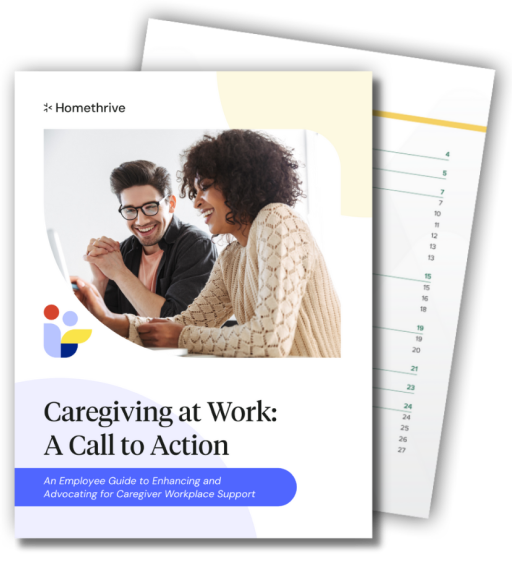The Increasing Crisis in Caregiving
The demographics provide a clear picture: as the population ages and healthcare expenses keep rising, more workers balance work obligations with caregiving responsibilities. According to recent surveys by the Rosalynn Carter Institute, one in five workers currently acts as a caregiver, and that percentage is expected to rise sharply over the next ten years. While trying to balance their full-time professional obligations, these workers devote an average of 24 hours a week to caretaking, the equivalent of part-time employment.
As the sandwich generation—those taking care of elderly parents and small children—continues to rise, the problem becomes even more pressing. All baby boomers will be over 65 by 2030, putting an enormous strain on the workforce to provide care.
The Financial Reality of Caregiving
Direct Caregiving Expenses
The financial burden on the caregiving employee manifests in multiple significant ways. Home safety modifications represent one of the most substantial upfront costs. Currently, stair lifts range from $3,000 to $12,000, alongside any necessary bathroom modifications and emergency alert systems that typically require monthly subscriptions. Smart home technology for remote monitoring adds another layer of expense to ensure loved ones’ safety.
Medical Equipment
Medical equipment and supplies constitute another significant expense category. Wheelchairs and mobility devices can cost anywhere from $500 to $5,000, while specialty beds may run between $500 and $10,000. Monthly medical supplies average between $200 and $400, and out-of-network specialist visits can exceed $10,000 annually. These costs often fall outside insurance coverage, leaving caregivers financially burdened.
Daily Living
Daily living expenses also significantly increase when caring for a loved one. Beyond basic groceries, caregivers often need to invest in grocery delivery services, specialized dietary requirements, and enhanced cleaning supplies. Utility costs typically rise due to the constant operation of medical equipment and increased home occupancy.
Transportation Costs
Transportation presents another significant financial challenge. Vehicle modifications for wheelchair accessibility often exceed $10,000, while specialized transport services cost between $50 and $100 per ride. Caregivers frequently face increased fuel costs for medical appointments and higher vehicle maintenance expenses due to increased usage and specialized equipment.
Household Services
Home services become a necessity rather than a luxury for many caregivers. Professional housekeeping services, averaging $250 monthly, and lawn care services at approximately $90 monthly, become essential when caregivers dedicate their limited time to direct care responsibilities. Additionally, many caregivers need to arrange for professional care assistance during work hours, further straining their financial resources.
Hidden Financial Impacts
The indirect financial consequences of caregiving often exceed the direct costs. Career impact represents one of the most significant long-term financial burdens. Many caregivers reduce their work hours by an average of 20%, resulting in immediate income loss. Passed promotions can impact annual earnings by an estimated $40,000 or more. The shift to part-time status often results in lost benefits, reduced retirement contributions, and depleted emergency savings.
Healthcare costs for caregivers themselves often increase substantially. For many individuals, the stress and physical demands of caregiving lead to higher personal medical expenses, increased insurance premiums, and the need for mental health support. Many caregivers delay their own preventive care due to time and financial constraints, potentially leading to more serious and costly health issues in the future.
The long-term financial effects of caregiving can echo throughout a caregiver’s lifetime. Reduced Social Security benefits due to lower lifetime earnings, diminished retirement savings from reduced contributions and early withdrawals, lost investment opportunities, and decreased home equity from delayed maintenance significantly reduce long-term financial security.
The True Cost to Employers
Productivity Loss
The impact of caregiving responsibilities on workplace productivity manifests in obvious and subtle ways. Research shows that caregiving reduces work productivity by approximately one-third, averaging an estimated $5,600 annually per employee.
Beyond these direct impacts, organizations face more nuanced productivity challenges. Quality control issues often emerge as stressed employees struggle to maintain their usual attention to detail. Project timelines frequently extend as caregiving employees balance competing priorities. Innovation and creativity typically decline as mental bandwidth becomes consumed by caregiving logistics. Perhaps most concerning is the ripple effect on team dynamics, where collaboration and group productivity often suffer as caregiving employees struggle to engage in team initiatives fully.
Absenteeism
Caregiving-related absences create substantial operational challenges for organizations. On average, caregiving employees miss 6.6 workdays annually, specifically for caregiving duties. Financially, these expenses account for approximately $2,000 per employee in lost work time. However, the actual cost extends far beyond these direct numbers.
Unplanned absences, particularly common among caregivers dealing with medical emergencies, create cascading disruptions throughout organizations. These last-minute schedule changes often require expensive temporary coverage or overtime payments for other staff members. Client relationships may strain as key contacts become temporarily unavailable. The administrative burden of managing these absences also creates hidden costs in HR time and resources.
Turnover Costs
The financial impact of losing caregiving employees presents one of the most significant challenges for organizations. With caregiving employees 70% more likely to leave their positions than non-caregiving employees, costs accumulate quickly. The average replacement cost for a mid-level employee typically reaches 150% of their annual salary, encompassing recruitment, training, and lost productivity during the transition period.
The departure of caregiving employees often creates deeper organizational wounds than standard turnover. These employees frequently possess significant institutional knowledge and strong client relationships built over years of service. Their departure can destabilize team dynamics and damage workplace culture, particularly when other employees perceive a lack of support for caregiving responsibilities as the driving factor behind the resignation.
Building a Comprehensive Support System
A successful caregiving support system requires a multi-faceted approach that addresses immediate and long-term needs. The most effective programs combine flexibility in work arrangements, direct support services, and enhanced benefits explicitly designed for caregiving employees.
Flexible Work Arrangements
Successful organizations have found that flexible work arrangements serve as the foundation of effective caregiver support. When properly implemented, remote work capabilities allow caregivers to remain productive while managing their caregiving responsibilities. Flexible scheduling enables employees to attend medical appointments and handle emergencies without sacrificing their professional obligations. Compressed workweeks and job-sharing programs provide additional options for employees to maintain their careers while meeting caregiving demands.
Caregiving Support Programs and Benefits
Organizations leading in caregiver support recognize the need for specialized benefits that address caregiving employees’ unique challenges. Benefits like Homethrive save time and reduce stress for the caregivers on your team by offering a combination of live support and access to a personalized digital portal. Homethrive provides instant recommendations for local caregiving products and services, and access to an assigned social worker that can help caregivers navigate insurance, book healthcare appointments, and research senior community options.
Implementation Strategy
A successful caregiving support program requires careful planning and phased implementation. Organizations should begin with a comprehensive assessment of their workforce’s caregiving needs and develop flexible work policies. Medium-term goals should focus on building comprehensive benefits. Long-term success requires a fundamental culture transformation that normalizes and supports caregiving responsibilities.
Return on Investment
Organizations that implement caregiving support regularly see significant returns on their investment. These benefits include an average 25% reduction in turnover among caregiving employees, a 30% decrease in absenteeism, and measurable improvements in employee engagement and productivity. Beyond these quantifiable metrics, organizations often experience enhanced recruitment success and strengthened employer branding.
Conclusion
The case for supporting caregiving employees has never been more apparent. As the caregiving crisis continues, organizations failing to address these challenges risk losing valuable talent, experiencing decreased productivity, and damaging their reputation as employers of choice. Investing in comprehensive caregiving support addresses critical human needs and positions organizations for sustainable success in an increasingly competitive business environment.
The time for action is now. Organizations that embrace this challenge will support their employees through one of life’s most significant challenges and build more resilient, productive, and loyal workforces for the future.
Support your employees by reducing the burdens of caregiving. Homethrive connects caregivers to cost-effective resources, including tailored product and service recommendations, government and community-based assistance programs, and Medicare experts who simplify navigating Medicare insurance.
By partnering with Homethrive, you can help employees reclaim valuable time and energy to focus on their work, families, and personal well-being. Show your team they don’t have to choose between their careers and caregiving responsibilities. Contact us today to explore how Homethrive can enhance your employees’ well-being and productivity.







